|
|
| Sei in: Cinema e Medioevo ® Vampiria. Tutti i film sui vampiri ® I film in ordine alfabetico (1896-oggi) |

Bathory
2008, regia di Juraj Jakubisko

Scheda: Nazione: Slovacchia-Ungheria-Repubblica Ceca-Francia-GB - Produzione: Jakubisko Film Slovakia, Eurofilm Stúdió, Jakubisko Film, Lunar Films, Concorde Film Trust (con il contributo di: Fonds Eurimages du Conseil de l'Europe, Ministry of Culture of the Slovak Republic, Státní Fond CR pro Podporu a Rozvoj Ceské Kinematografie) - Distribuzione: Paramount Home Entertainment, Screen Media Films, Bontonfilm, Sola Media, Tatrafilm, Central Partnership, Budapest Film, Condor Entertainment - Soggetto: Juraj Jakubisko - Sceneggiatura: Juraj Jakubisko, John Paul Chapple, Ľubomír Feldek - Fotografia: F.A. Brabec, Ján Duris - Montaggio: Christopher Blunden - Art Director: Karel Vacek - Scenografia: Juraj Jakubisko - Set Decoration: Jan Kodera - Costumi: Julia Patkos, Jaroslava Pecharova - Musiche: Jan Jirásek, Simon Boswell, Petr Hapka, Andrej Turok, Martin Maok Tesák - Effetti speciali: ACE post - Formato: Color - Durata: 141'.
Cast:
Anna Friel, Karel Roden, Vincent Regan, Hans Matheson, Deana Horváthová, Franco
Nero, Antony Byrne, Bolek Polívka, Jirí Mádl, Monika Hilmerová, Lucie
Vondrácková, Jaromír Nosek, Marek Majeský, Marek Vasut, Jana Olhová, Michaela
Drotárová, Sandra Pogodová, Beata Greneche, Eva Elsnerová, Hana Vagnerová,
Andrej Hryc, Karel Dobrý, René Stúr, Vincenzo Nicoli, Karel Belohradský, Pavel
Kocí, Pavel Skrípal.
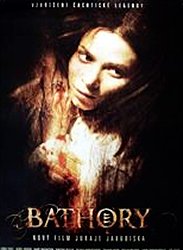
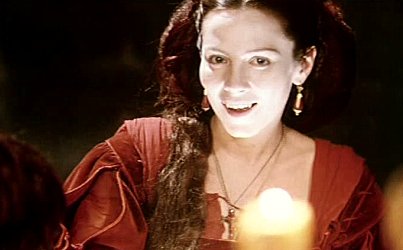

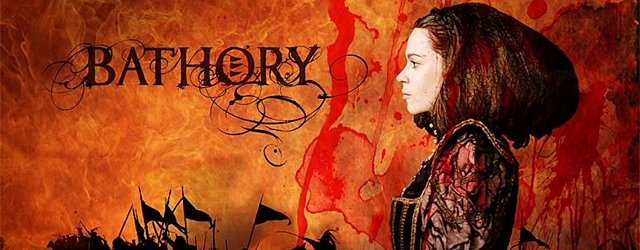

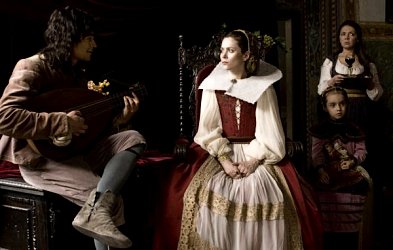


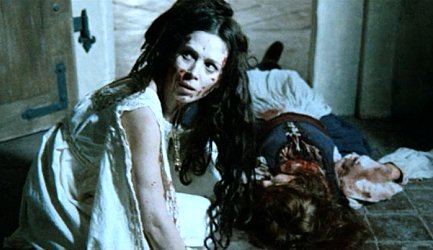
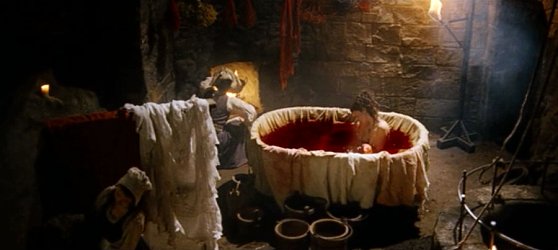

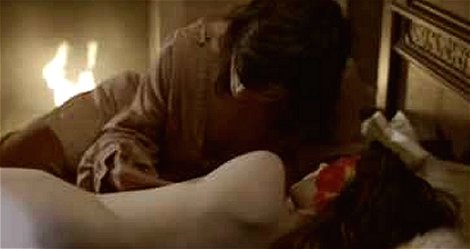


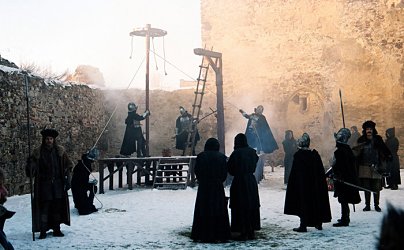
![]() Trama e commenti:
primissima.it -
filmscoop.it -
the-borgias.forumfree.it -
cultmovie.altervista.org -
cinephobic.forumfree.it: «Costumi
sontuosi, scenografie spettacolari ed epiche scene di battaglia: Bathory,
il film di Juraj Jakubisko ispirato alla vita della sanguinaria contessa, è il
film più costoso mai prodotto in Slovacchia. "Bathory, il film dedicato
alla contessa Elizabeth Bathory, accusata di aver ucciso 650 persone e per
questo motivo entrata nel Guinness dei primati per essere la più grande
assassina di massa della storia dell’umanità"».
Trama e commenti:
primissima.it -
filmscoop.it -
the-borgias.forumfree.it -
cultmovie.altervista.org -
cinephobic.forumfree.it: «Costumi
sontuosi, scenografie spettacolari ed epiche scene di battaglia: Bathory,
il film di Juraj Jakubisko ispirato alla vita della sanguinaria contessa, è il
film più costoso mai prodotto in Slovacchia. "Bathory, il film dedicato
alla contessa Elizabeth Bathory, accusata di aver ucciso 650 persone e per
questo motivo entrata nel Guinness dei primati per essere la più grande
assassina di massa della storia dell’umanità"».
![]() Plot Summary, Synopsis, Review:
IMDb -
allmovie.com
-
taliesinttlg.blogspot.czscoopy.com
-
en.wikipedia.org
-
bathory.org
-
fame.uk.com
-
variety.com
-
rantchick.com
-
filmstarts.de
-
visionfilms.net
-
krelllabs.blogspot.it:
«The
Erzsébet Báthory legend is one of the most persistent stories in the horror myth
pool, partially because it's so utterly ghastly and partially because it's a
so-called "true story". I mean, I certainly remember being riveted by it when I
first discovered it as a teen horror geek, particularly as a queer teen horror
geek. It goes something like this: In 1610, Hungarian noblewoman Erzsébet
Báthory (1560-1616) was tried and convicted of murdering peasant women with the
aid of her servants. For this crime, she was walled up in her castle for the
last five years of her life. The tally of her victims ranges anywhere from 36 to
650, though no one knows for sure. There is some evidence that the whole thing
was a frame-up either by the Catholic Church and the Hapsburgs, who wanted to
turn the Holy Roman Empire Catholic and turn back the reformation, or by King
Mattias of Hungary, who owed the Bathorys a huge amount of money after they
financed his war against the Ottoman Turks. Is the Bathory story propaganda?
Maybe, but even so, Elizabeth Bathory is still listed in the record books as a
the most voracious female serial killer in history. As if her story weren't
ghastly enough, somewhere along the line, someone appended the notion that
Bathory was a lesbian who bathed in the blood of virgins to maintain her youth.
This is unsupported by the historical record, but the myth pool doesn't care
about history, it cares about stories. So like Lizzie Borden and the forty
whacks, Erzsébet Báthory has been convicted of crimes of dubious or even
fictional veracity in the popular imagination. She is forever "The Blood
Countess," and the font from which the lesbian vampire archetype flows. ...
Plot Summary, Synopsis, Review:
IMDb -
allmovie.com
-
taliesinttlg.blogspot.czscoopy.com
-
en.wikipedia.org
-
bathory.org
-
fame.uk.com
-
variety.com
-
rantchick.com
-
filmstarts.de
-
visionfilms.net
-
krelllabs.blogspot.it:
«The
Erzsébet Báthory legend is one of the most persistent stories in the horror myth
pool, partially because it's so utterly ghastly and partially because it's a
so-called "true story". I mean, I certainly remember being riveted by it when I
first discovered it as a teen horror geek, particularly as a queer teen horror
geek. It goes something like this: In 1610, Hungarian noblewoman Erzsébet
Báthory (1560-1616) was tried and convicted of murdering peasant women with the
aid of her servants. For this crime, she was walled up in her castle for the
last five years of her life. The tally of her victims ranges anywhere from 36 to
650, though no one knows for sure. There is some evidence that the whole thing
was a frame-up either by the Catholic Church and the Hapsburgs, who wanted to
turn the Holy Roman Empire Catholic and turn back the reformation, or by King
Mattias of Hungary, who owed the Bathorys a huge amount of money after they
financed his war against the Ottoman Turks. Is the Bathory story propaganda?
Maybe, but even so, Elizabeth Bathory is still listed in the record books as a
the most voracious female serial killer in history. As if her story weren't
ghastly enough, somewhere along the line, someone appended the notion that
Bathory was a lesbian who bathed in the blood of virgins to maintain her youth.
This is unsupported by the historical record, but the myth pool doesn't care
about history, it cares about stories. So like Lizzie Borden and the forty
whacks, Erzsébet Báthory has been convicted of crimes of dubious or even
fictional veracity in the popular imagination. She is forever "The Blood
Countess," and the font from which the lesbian vampire archetype flows. ...
Bathory (2008, directed by Juraj Jakubisko) attempts to rehabilitate Erzsébet with indifferent results. It restores to the myth the notion that Erzsébet was the victim of the machinations of her enemies, but it falls under the sway of the myth even as it does this. It can't help itself. It presents the image of Bathory bathing in blood (later revealed to be water colored red with herbs--yeah, whatever) and it presents Bathory as a murderess, who kills while under the influence of hallucinogens and in fits of pique. Basically, Bathory wants to have it both ways and makes a muddle of the whole thing. Bathory postulates a "truer" history of its title character and plunges the viewer headlong into the long and bloody conflict between the Christian nations of Eastern Europe (including Hungary, The Holy Roman Empire, Transylvania, etc.) and the Ottoman Turks. The wars keep Erzsébet's husband, Ferenc away for years at a time. Even when he's at home, Ferenc is no prince charming. He rapes Erzsébet while she's pregnant, causing her to miscarry with their son. He's subsequently captured by the Turks, though with the aid of his friend, Thurzo, he escapes. In Ferenc's absence Erzsébet amuses herself with an affair with a visiting artist. When Ferenc returns, he's suspicious of the artist and contrives to poison him, but Erzsébet drinks the poison by mistake. The artist escapes and Erzsébet survives, barely. She's tended for the poison by the healer, Darvulia, who many in the kingdom regard as a witch. Under Darvulia's care, Erzsébet's behavior becomes erratic, sometimes violently so. The servants in her castle begin to die in mysterious ways. After Ferenc's death, Erzsébet's enemies circle. She drives Darvulia away because she believes she has betrayed her. Two Catholic monks arrive to investigate the rumors being spread about her by the local Lutheran pastor. And her life unravels.For a movie that wants to overturn the popular image of Erzsébet Bathory, this film does a piss poor job of it. ...».
![]() Approfondimenti:
Movie
Review
Approfondimenti:
Movie
Review
Conosciuto anche con i titoli: Bathory: Countess of Blood; Condessa de Sangue; Báthory - Die Blutgräfin; Chroniques d'Erzebeth: Le Royaume Assailli.